Grays World Travels 2017-2018
Australia
Our journey on the continent of Australia took us to a world-class city, a rainforest, the Great Barrier Reef, Central Australia and the desert, and the Great Ocean Road in Melbourne.
Landing in Sydney we definitely felt as though this was a country that functioned and things were efficiently run. For instance, there was soap in the bathroom. There were traffic lights at intersections and people followed the signals. Little things like that.
Sydney is a beautiful city, with a breathtaking harbor, albeit a trifle more pricey than we are accustomed. The days in Sydney were ones Fiona and Harley anticipated greatly: Fiona’s friend Jemma Jarvis moved to Sydney 18 months ago from Eagan, Jack Jarvis was in Harley’s class at Woodland until he moved also, and our friends the Andersons, including Nora (one of Fiona’s besties) were visiting the Jarvis family at the same time. The kids had an absolute blast and only surfaced for air when absolutely necessary. I’d like to give a shout-out thanks to the Jarvis parents, James and Jackie, for showing us all around Sydney and the North Beaches (and especially to Jackie, the best barista at latitude 34 South, for introducing me to a flat white). The North Beaches of Sydney have gained notice recently with the popularity of Liane Moriarty’s books (Big Little Lies) and so I enjoyed absorbing the ambiance; the Jarvis’ home is within walking distance of the Newport Beach.
We traveled into the city two of the four days we were in Sydney and stayed around Newport the other two. The view from the ferry of the
sarahdimickgray
19 chapters
Australia
Sydney, Cairns, Alice Springs, Melbourne
Australia
Our journey on the continent of Australia took us to a world-class city, a rainforest, the Great Barrier Reef, Central Australia and the desert, and the Great Ocean Road in Melbourne.
Landing in Sydney we definitely felt as though this was a country that functioned and things were efficiently run. For instance, there was soap in the bathroom. There were traffic lights at intersections and people followed the signals. Little things like that.
Sydney is a beautiful city, with a breathtaking harbor, albeit a trifle more pricey than we are accustomed. The days in Sydney were ones Fiona and Harley anticipated greatly: Fiona’s friend Jemma Jarvis moved to Sydney 18 months ago from Eagan, Jack Jarvis was in Harley’s class at Woodland until he moved also, and our friends the Andersons, including Nora (one of Fiona’s besties) were visiting the Jarvis family at the same time. The kids had an absolute blast and only surfaced for air when absolutely necessary. I’d like to give a shout-out thanks to the Jarvis parents, James and Jackie, for showing us all around Sydney and the North Beaches (and especially to Jackie, the best barista at latitude 34 South, for introducing me to a flat white). The North Beaches of Sydney have gained notice recently with the popularity of Liane Moriarty’s books (Big Little Lies) and so I enjoyed absorbing the ambiance; the Jarvis’ home is within walking distance of the Newport Beach.
We traveled into the city two of the four days we were in Sydney and stayed around Newport the other two. The view from the ferry of the
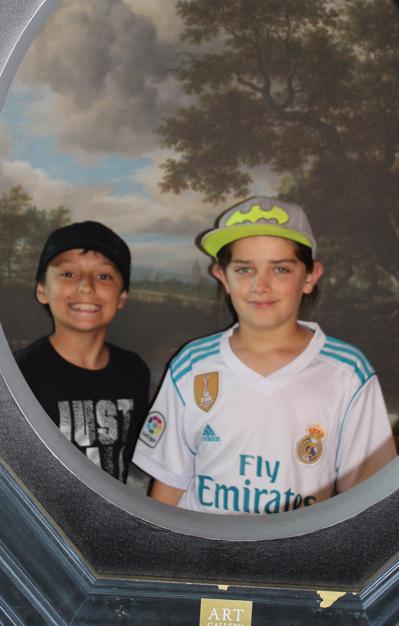

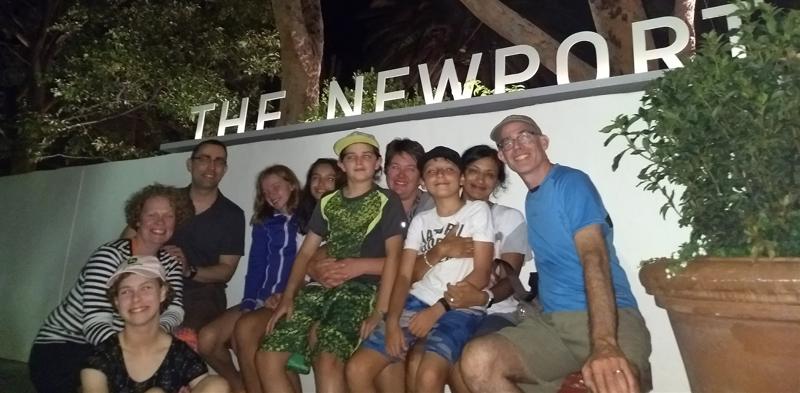
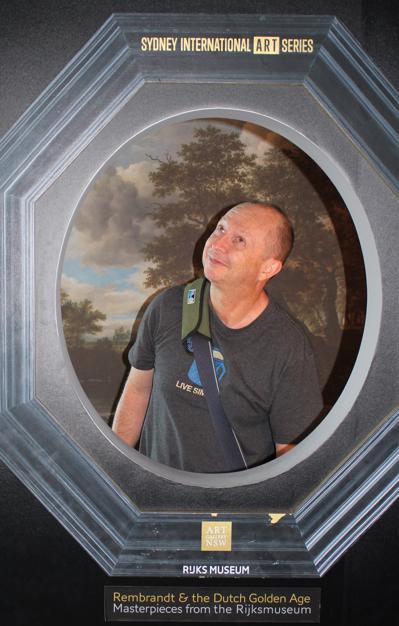
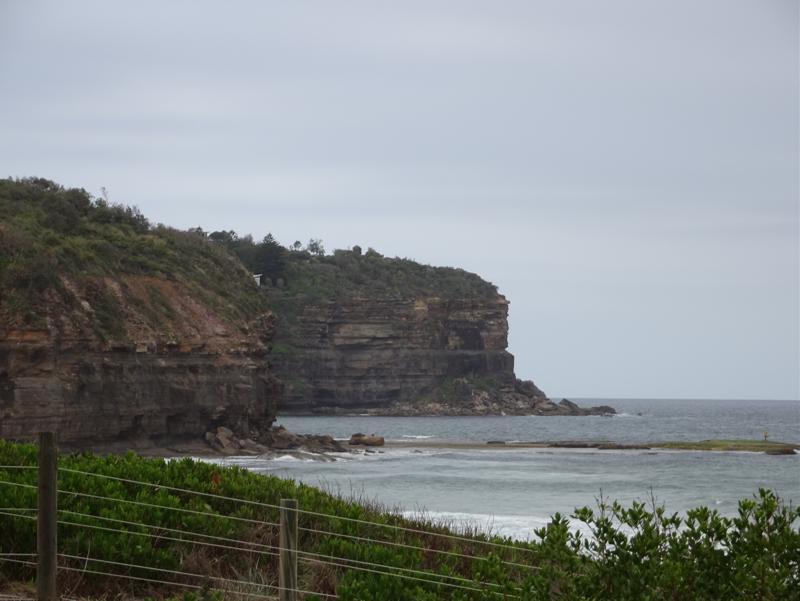
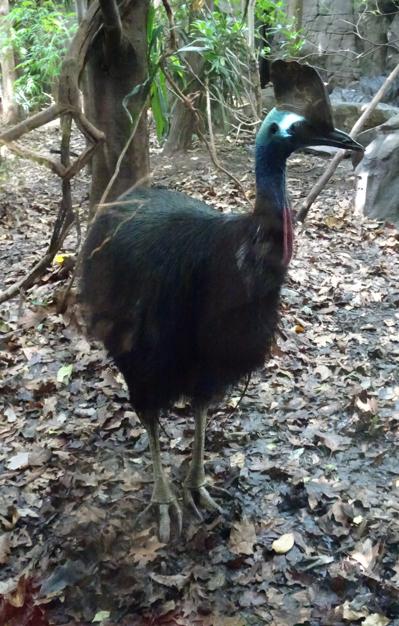
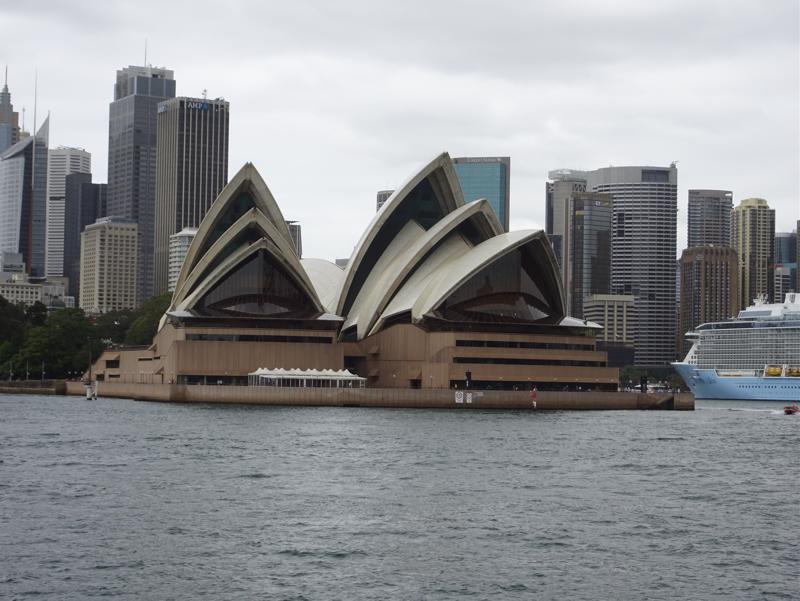
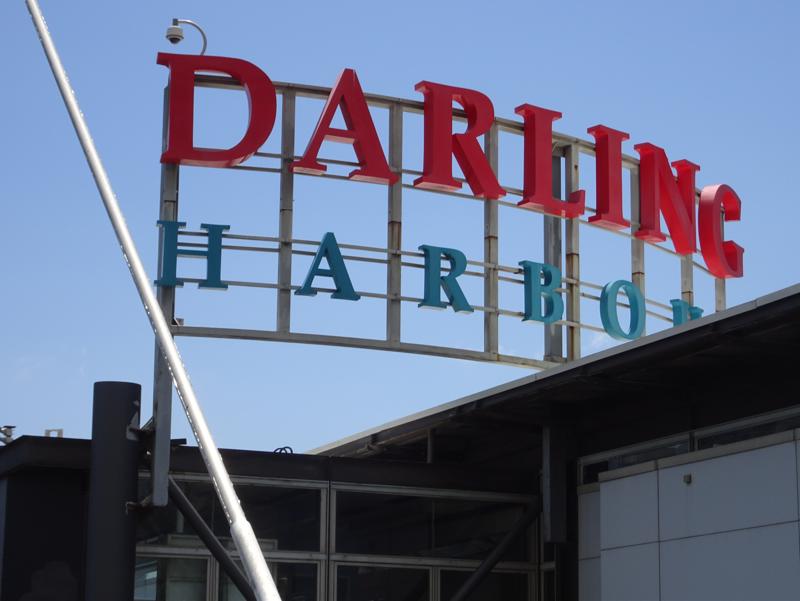
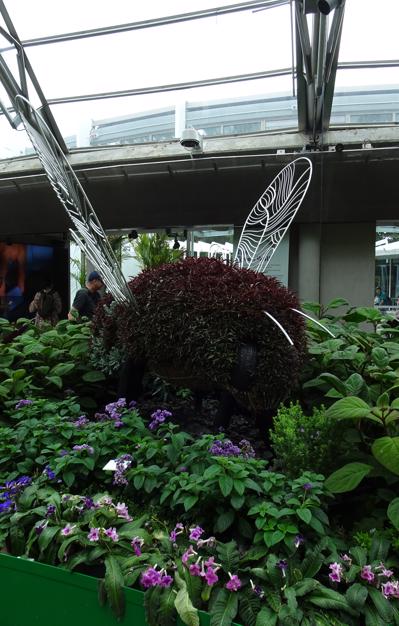
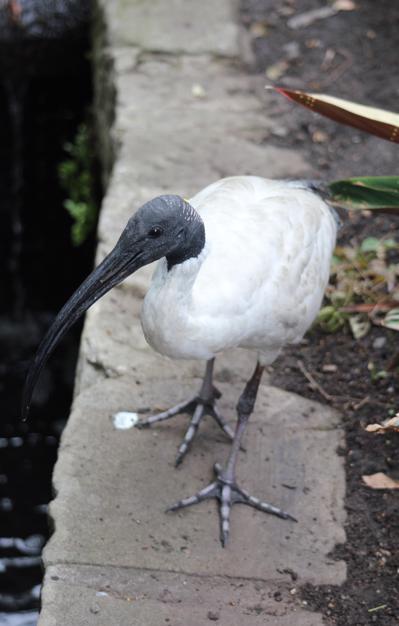
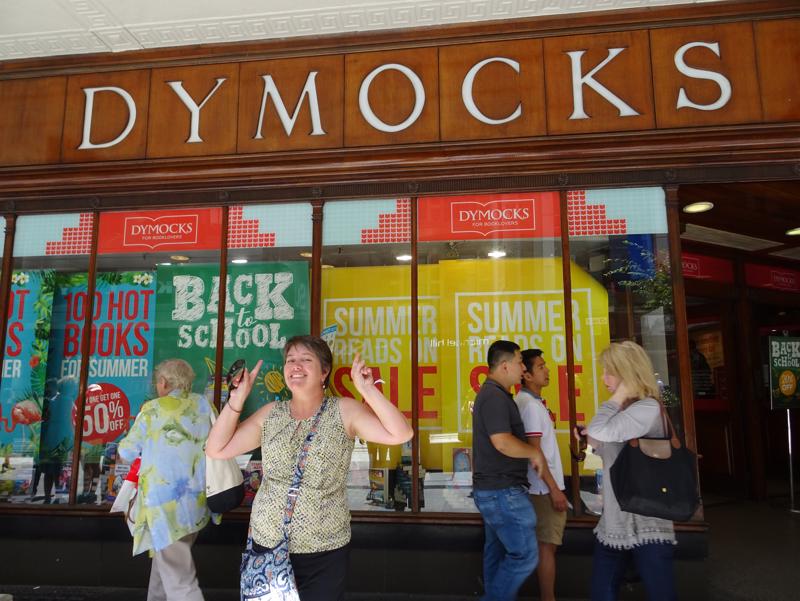
Sydney Opera House, set as it is in the Sydney Harbor, was fantastic, and that was the first place we visited on our first city day. We moved on to the Royal Botanical Gardens and Scott recognized some of the same plants he knew from Florida, as well as some native only to Australia. From there we went to the Sydney Art Museum and saw not only Australian art but also the visiting Dutch Masters exhibit—timely as we had chosen not to go to Rijksmuseum in Amsterdam!
Our next day was spent at the Newport Beach, jumping in the waves and swimming laps in the ocean pool—a concrete structure on the shore that was filled with ocean to about 4 feet and completely devoid of waves. I could almost swim laps in it, but I found myself spitting out salt water, I am just not used to that. We finished the day at The Newport, a restaurant with a variety of food for every taste and great outdoor ambiance.
Our second day in Sydney we visited Darling Harbor and the Wild Life zoo. We saw lots of Australia-only fauna and came away with Fiona’s theory that just about everything in Australia wants to kill you ;). Not everything, perhaps, but there are a bunch of insects and reptiles that necessitated the phrase, “Just be careful, mate!” Perhaps one of the more interesting parts of that zoo were the very sleepy koalas on small trees that surrounded us while we were eating lunch. Or the 23-foot crocodile, the quokka (smaller relative of a kangaroo), the prehistoric-looking bird called a cassowary (native to Daintree Rainforest), the platypuses...From the Harbor we went through the QVB, the Queen Victoria Building, and visited the Jarvis’ family favorite bookstore, Kinokuniya. On our way back to the double-decker bus, we passed by another great bookstore...the spelling is a little off, but I think you can understand my affinity!
Our last day in the Sydney area was spent relaxing in Newport, visiting the beaches once again, and catching up with the Jarvis’ family one last time before our flight to Cairns.
In Cairns we did two major activities: we visited Daintree National Park, a rainforest older than the Amazon, and we did a three-day snorkeling trip at the Great Barrier Reef. We also swam at Port Douglas on Four-Mile Beach, which was a beautiful beach with water temperatures of 86-90 F and netted swim area. The nets are important to keep out marine stingers, which are a potent species of jellyfish, and the occasional saltwater croc. Daintree National Park and the Great Barrier Reef are two World Heritage Sites adjacent to one another, and for part of the drive we had rainforest to one side of us and coast on the other.
Daintree is a park which one drives through, stopping occasionally at established boardwalks which provide relatively safe walking trails through the forest. Daintree has been compared to what Jurassic Park might be like—remember the cassowaries? Apparently they are very aggressive birds and able to cause significant bodily harm to any threatening human-size being and they live in Daintree. We kept our eye out for them, but luckily we did see them in the zoo because they kept hidden in the Park. I loved all the species of palm trees in Daintree; they were beautiful. We also stopped to wade in the gorgeous beach at Cape Tribulation in the Park, joining about a dozen other people, until someone in a host shouted at us to get the heck out—there were two crocs living in the area. The truth is there are miles of phenomenal beaches in this area of Australia but only a few select areas to swim safely. We wrapped up this trip with a stop at Daintree Ice Cream Company, specializing in exotic fruit ice cream, for a sample of their daily mix: coconut, Damson plum, passion fruit, and wattleseed (think mocha). Yum. The next day we did the second part of Daintree, Mossman Gorge, and walked around Cairns downtown. Fiona is thinking of switching instruments in the band after trying out the didgeridoo (she was actually a very quick study and quite good).
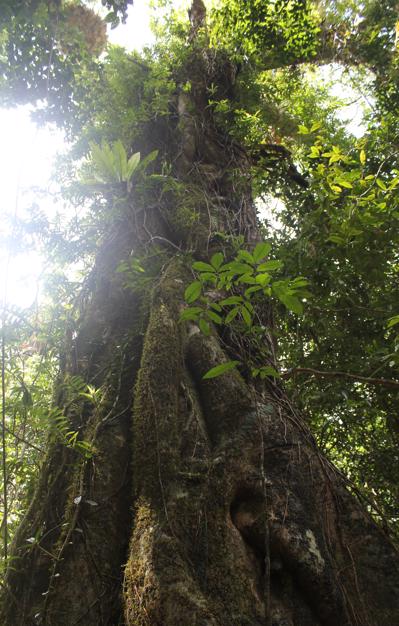
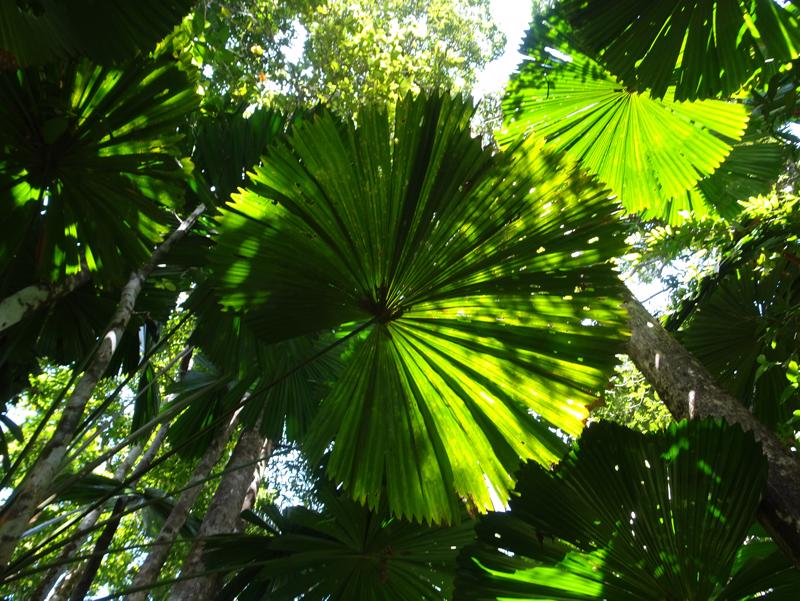

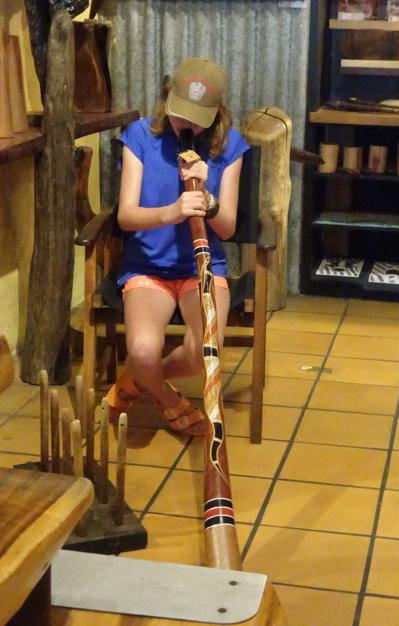

Early the next morning our van picked us up for our three-day Great Barrier Reef snorkeling trip. We needed to travel first on a daily boat to the live aboard boat moored out at the reef approximately 54 km away from Cairns. I will not mince words: the trip out to the Reef was the worst boat trip for seasickness I have ever taken. It had rained significantly the night before, after all it is monsoon season, and the crew was handing out yak bags like they were party favors. We took precautionary medicine and downed ginger candy at regular intervals and were grateful went the two hour ordeal was over. Luckily the live aboard boat, also called a dive boat, was much smoother. The boat could hold about 32 guests and nine crew when maxed out; we had about 20 aboard the first night, ten the second night, plus the daily guests. Most of the guests were scuba divers either earning certification or just enjoying the Reef. We completed eight snorkeling sessions (Fiona did nine) over the course of the two days, each one hour in duration on the East Timor and West Timor reefs. Between
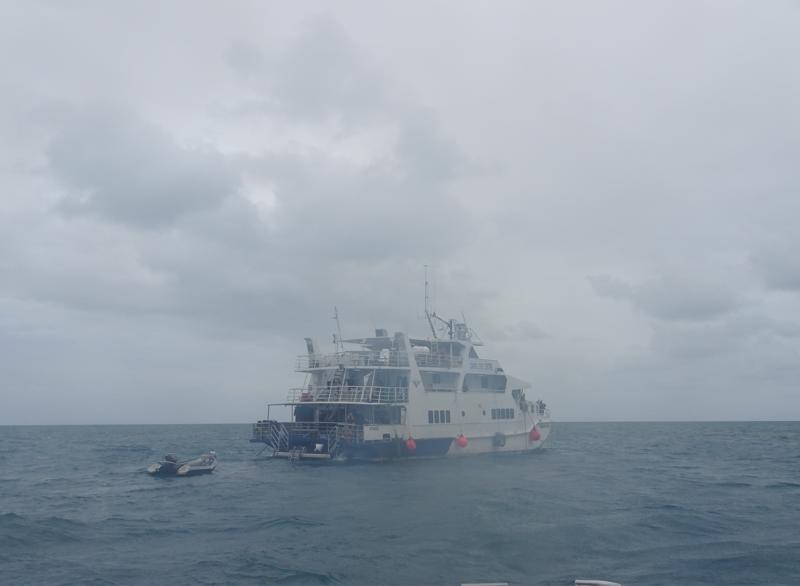
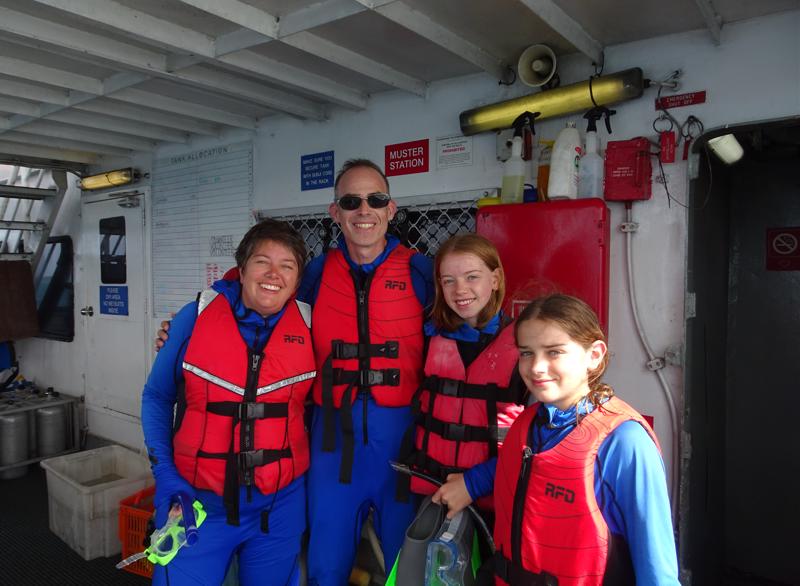
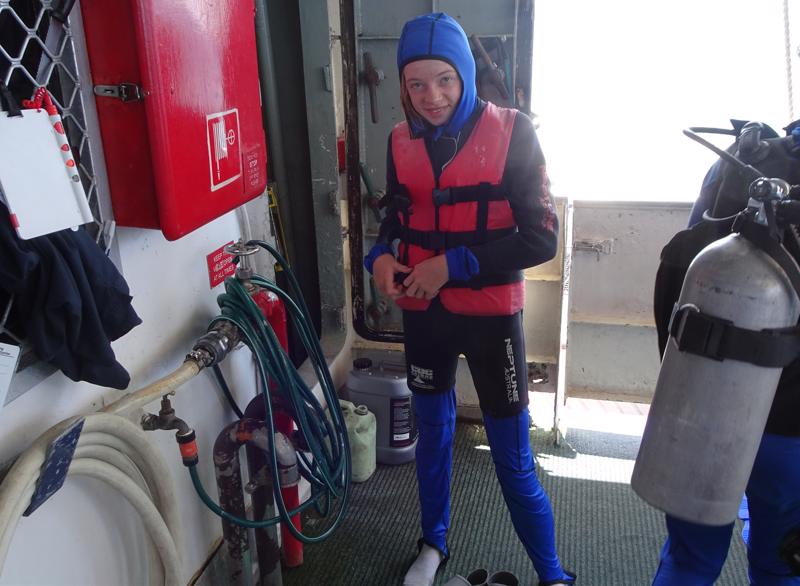

these we rested, ate, read. We wore stinger suits, life, jackets, flippers, masks, and snorkels. The kids were true troopers and handled it more maturely than I dared hope.
The Reef was absolutely amazing. We did not have an underwater camera, and so I do not have pictures, but imagine every picture you have seen of the Great Barrier Reef: corals of every hue, brilliant blue, purple, green, orange, gray brain coral, spiky coral, yellow and golds. Fish everywhere, striped and spotted and random pattern colorful. But my favorite were the giant clams: at least two feet high and three feet across with purple or blue or green or sienna velvety interiors and living parts so one could see them filter the water for food. We saw a lot of moon jellyfish, which are harmless. We did not see any sharks and no one touched the cone shell that, if the organism inside chooses to sting you, you have about 7 minutes to live (sorry, mate, nothing we can do about that one, we were told). And, sometimes, we saw areas of the Reef that were white and bare: the locals really want a cyclone to come and clean out the Reef and promote new growth, and of course I hope they are right, that’s all it needs. The trip back off the Reef was much calmer, thank goodness, and we returned to our cabin to prepare for the flight to Alice Springs.
Alice Springs, Northern Territory, population 28,000, is the hub of The Outback. The vast majority of Australians live on the periphery of the continent and we now know why: it is wicked hot and dry In the interior. The beautiful places we wanted to see in the Territory include the western MacDonnell Range, King’s Canyon, and Uluru (formerly Ayer’s Rock). The cars in the area only have AC, no heat, and it is recommended that one carries about 10 liters of water per day person in the car in case of car breakdown, etc. All the sun strategies we learned in Africa were in full effect. We did see the car register 46 C, or 114 F, while we were there. This is the area with signs like “next service 184 km” so one needed to be prepared.
Our first day we went on a five hour tour of the western MacDonnell Range, including Simpson’s Gap, Ellery Creek, and Ortmann Gorge. The colors include the deepest red for sand I’ve ever seen, and set against it, some brilliant greens of the scrub surrounding the hills. Ellery Creek and Ortmann Gorge included some wonderful, croc-and-snake free waterholes which we definitely enjoyed. The next morning we were lazy at the Alice Springs hotel pool before driving three hours to King’s Canyon, also called Australia’s Grand Canyon. About 50 km of the drive was on dirt roads and we passed precisely three cars during that time. We got to the King’s Canyon Resort. Now, it is true it was off-season; but the camp store had dried noodles, some small sandwiches, and frozen kangaroo tail (skin on), and not much else. Luckily the bar had pizza for dinner. Scott did notice some serious price inflation at the camp store for water: one 10 L box of water was $20, whereas in Alice Springs the same box had gone for $3. We were grateful for all the snacks and leftover nibbles we had brought with us from Alice Springs. We did a small
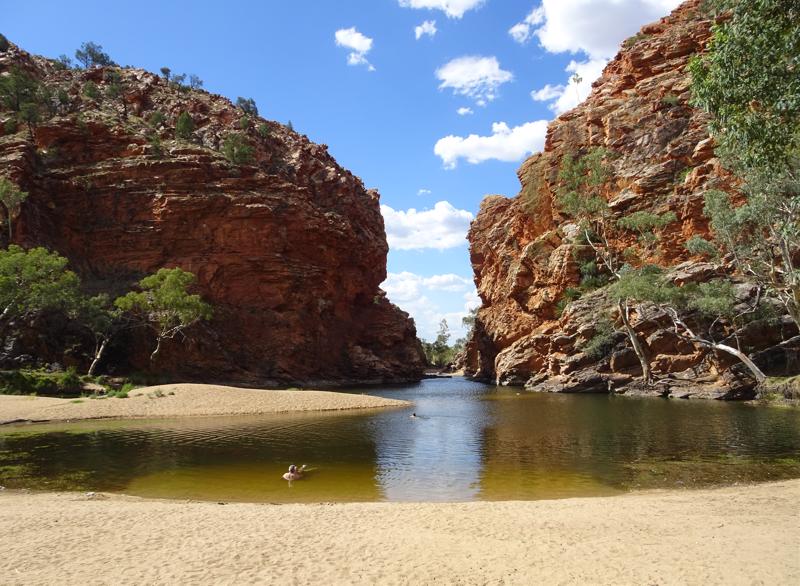
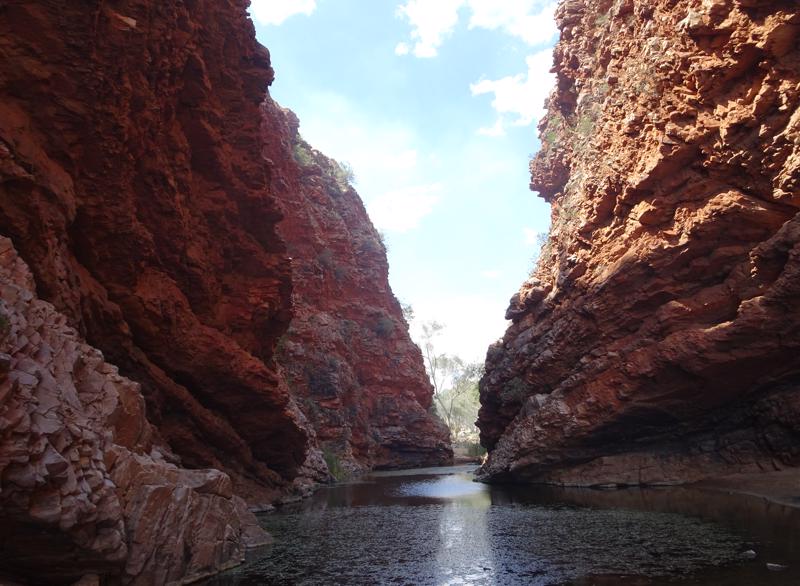
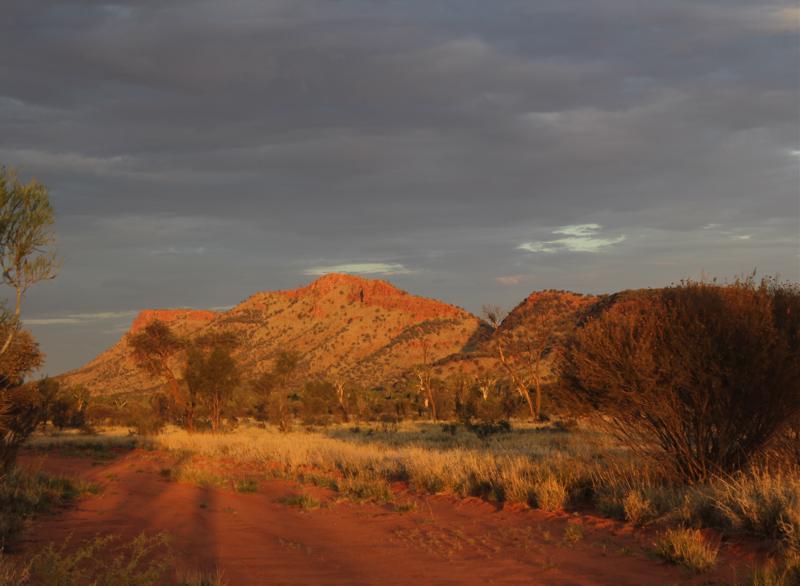
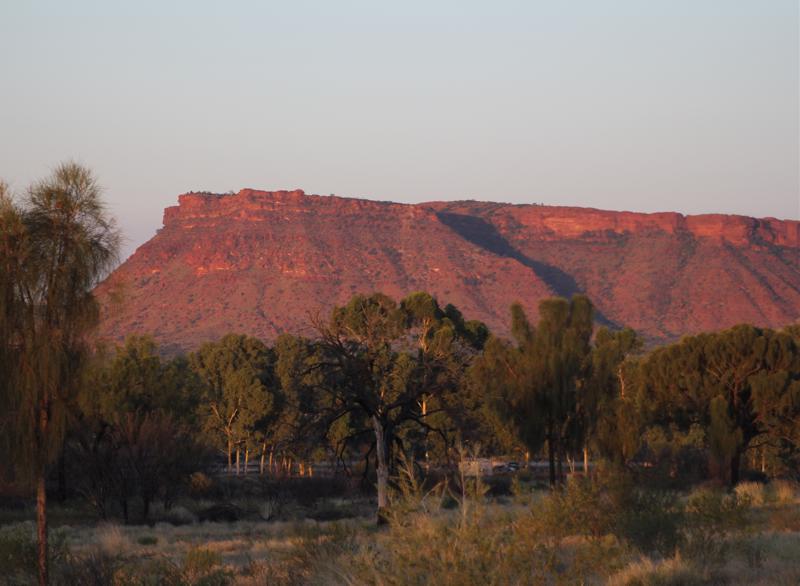
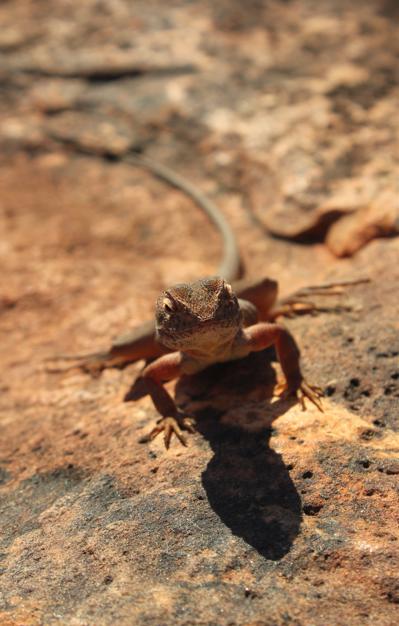
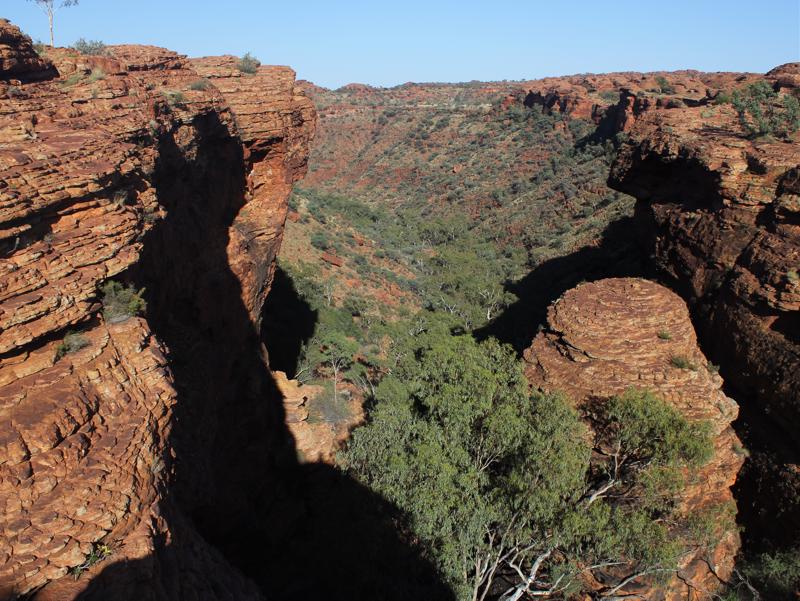

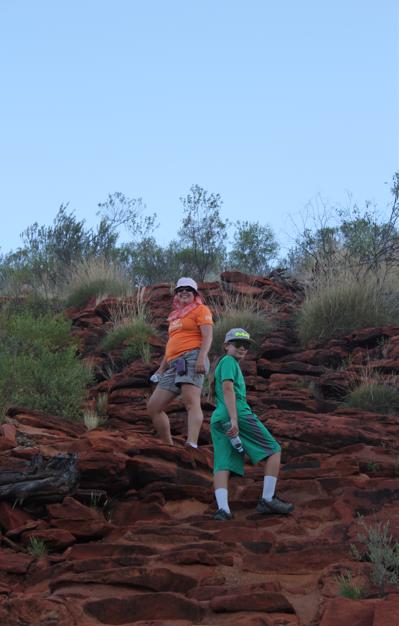
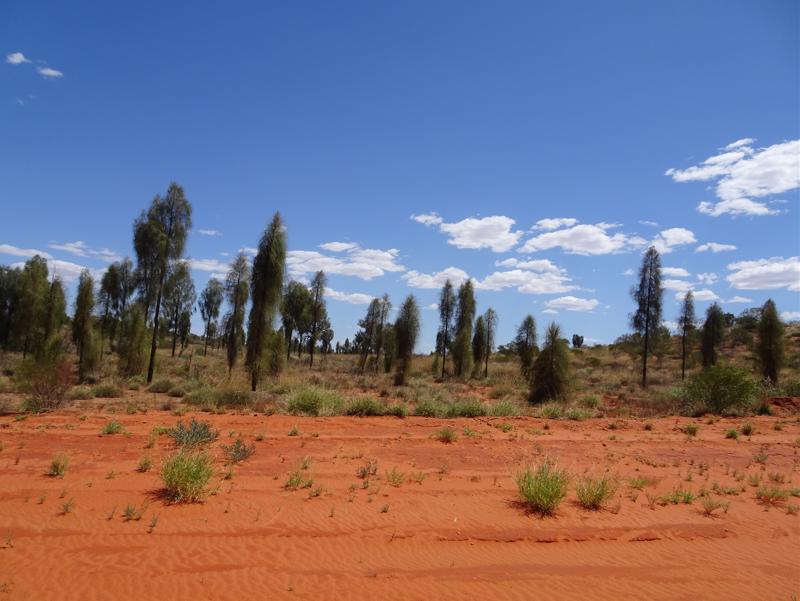
hike that afternoon, King’s Creek, and then the next morning we got up early to hit the main walk, King’s Canyon Rim Walk, at 7 AM. The walk, 6 km and estimated to take 3 hr, closes at 9 AM to start—they don’t want to have to rescue anyone for heat exhaustion. King’s Canyon is a highly compressed sand dune that became sandstone. Very unique vistas, and we even saw a wild kangaroo!
After that, we headed for Uluru, a three hour journey again. Luckily the Ayer’s Rock Resort is a bit bigger than King’s Canyon and with an awesome IGA grocery (yes, for the record, that is two grocery stores during a six hour drive. That’s it). The area has the Ayer’s Rock Resort, the Connellan Airport, and the Uluru-Kata Tjuta National Park. We stayed in an air-conditioned cabin that was part of the Ayer’s Rock Campground; it had a kitchenette but no bathroom—so walking to the facilities often required a hat and sunglasses and I always wanted to make sure the kids got back in a reasonable amount of time because it was just so hot outside. For the record, thirty years ago my grandparents and uncles camped when they visited. We saw people with tents, and I was very grateful to have the AC.
Our first night we saw the sunset on Uluru, then got back to rest for an early morning start on our planned hike. The option to climb Uluru is heavily discouraged and restricted by the local people; therefore, we did not follow in the footsteps of my grandfather and uncles with a climb but rather the path of my grandmother who did the 10 km base walk. The flies were a significant nuisance (I am subtitling the picture of the kids in their anti-fly gear "Give me your WiFi password and your stash of gummy bears and no one gets hurt") and we tried not to inhale them during the walk, starting again at 7 AM to capture the bearable part of the day. The temperatures usually started at 28 C and rose to 36 C while we were out hiking (84 F to 96 F). The next day, I celebrated my birthday with some walks around Kata Tjuta, the other rock formation near Uluru. We spent the rest of those two days
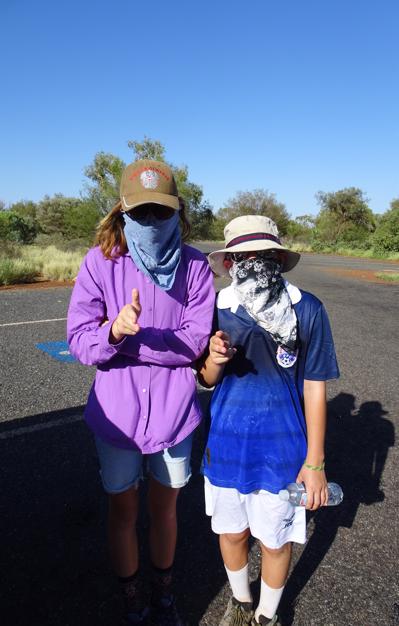
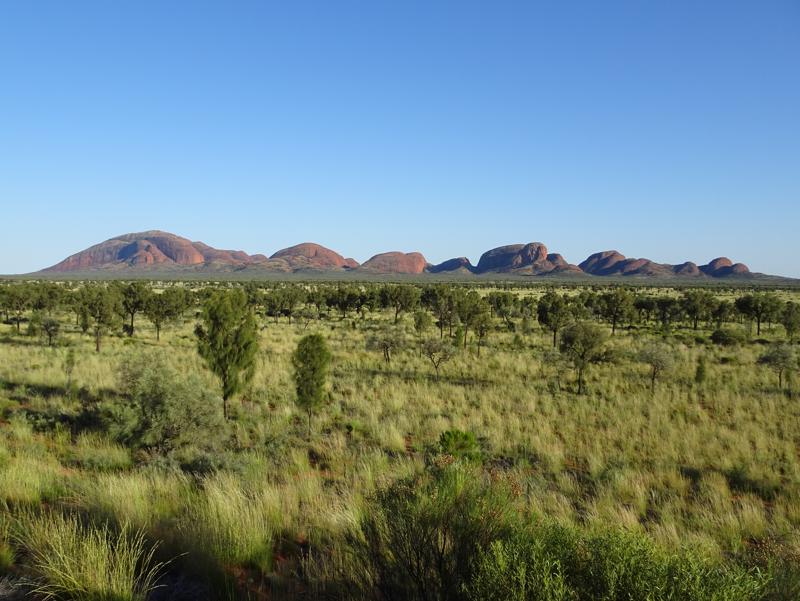
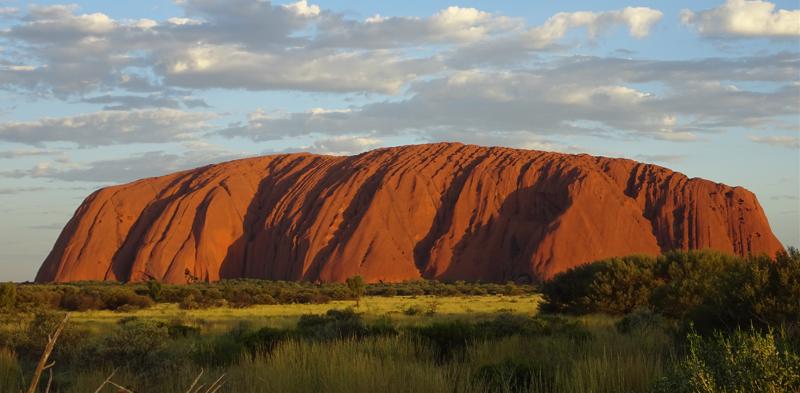
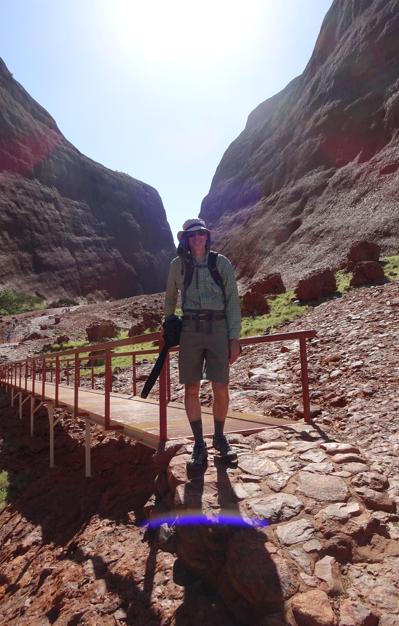
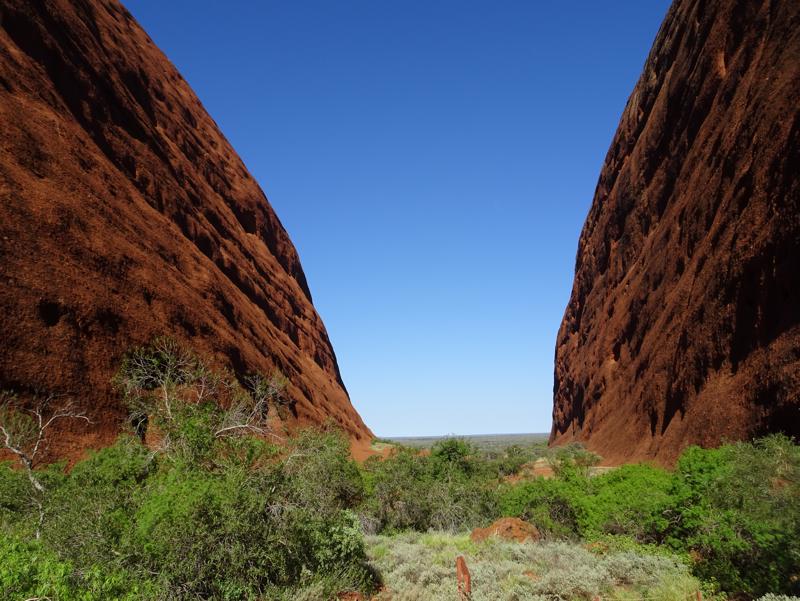
admiring the local (pricey) aboriginal art, relaxing in the pool, and huddling in our cabin with WiFi. Harley has decided after this trip he misses the snow and he might be a true northerner.
We flew out from Uluru to Melbourne. The Uluru airport, Connellan Airport, is the only one I’ve ever seen to encourage people to take a bottle of water with them through security. Flights go to Melbourne on Tuesdays and Thursdays, so one definitely wants to be on time.
Once in Melbourne, we retrieved our rental car (Scott has been soooo good about driving on the left) and drove west to the Great Ocean Road, joining the Melburnians (yep, that's a thing) who had a three-day weekend coming up for Australia Day, January 26. We passed a few coastal vacation towns that were packed with campers and made our way to bimbipark, whose tagline is "camping under koalas," located in Cape Otway National Park. This place was one of my favorite camping places: we had a bunkhouse, but one could rent deluxe cabins, trailers set up under awnings, and a host of other types of low-cost options. I could definitely see camping here often if it was located in MN! The weather in Cape Otway was 23-25 C, the seventies, and we felt able to breathe again. We did some hikes in the rainforests around the area the next day (Mait's Retreat, the Redwoods, the Triple Waterfall) and rode e-bikes around the Cape; the lighthouse pictured is the oldest lighthouse on the Australia mainland. And yes, we did see koalas! We looked up in the trees and found several of them snoozing. We also saw an abundance of kangaroos.
Our next day we traveled further west on the Great Ocean Road and saw the amazing cliff and rock formations that are a central draw for the area, the Twelve Apostles, the London Bridge, the Arch, and the Grotto on our way to the town of Warrnambool (population 32,000) on the western edge of Victoria. We finished our day with a swim in the Southern Ocean...a bit chillier than Port Douglas!
We needed to get back to Melbourne the next day, so after visiting

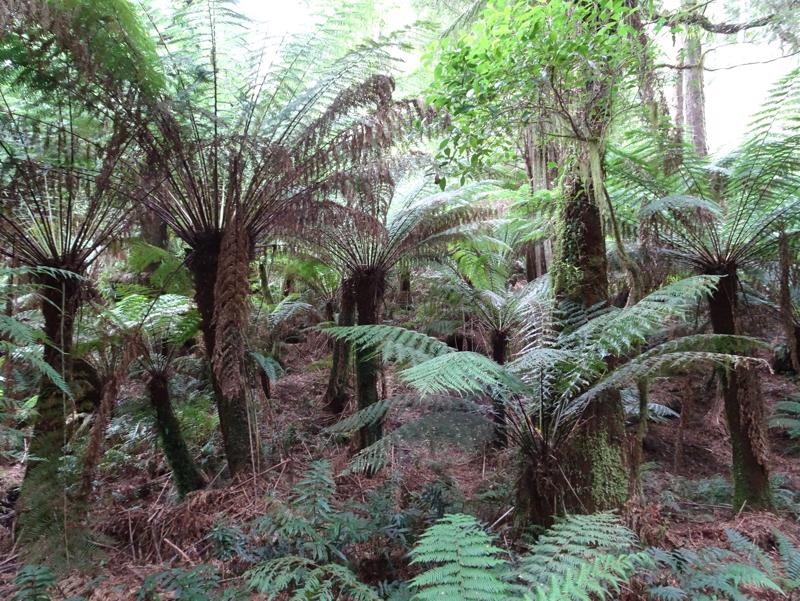
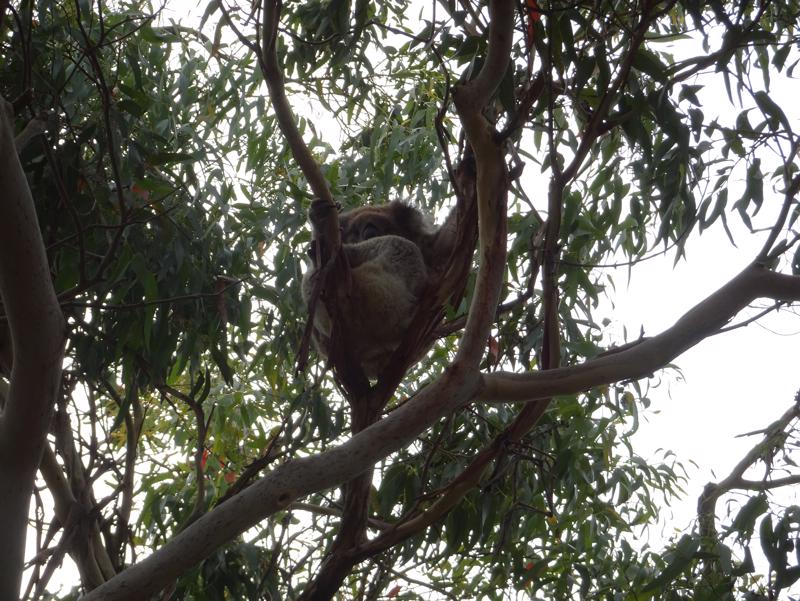
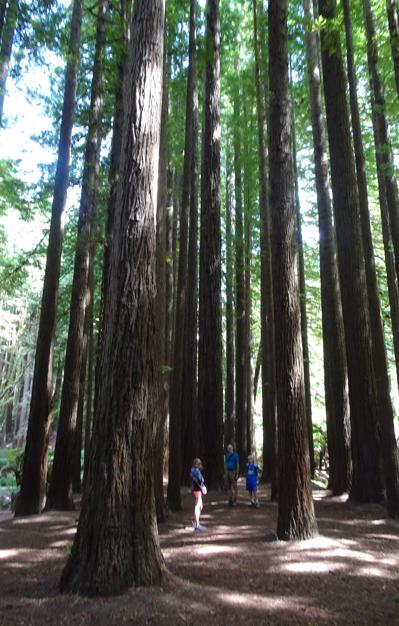
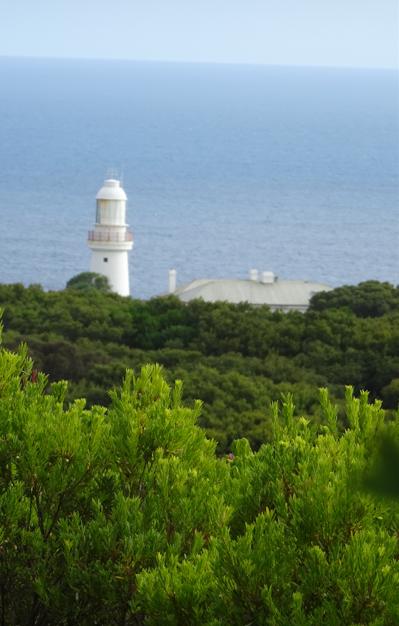
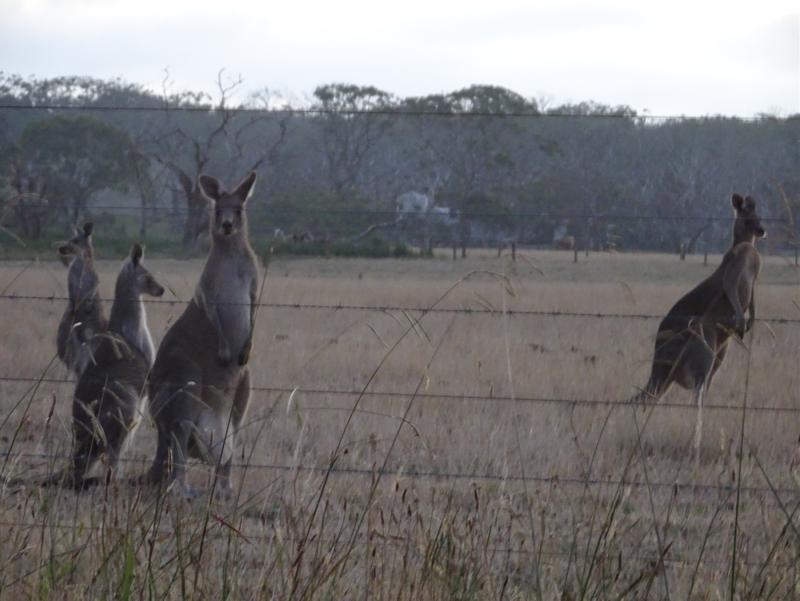
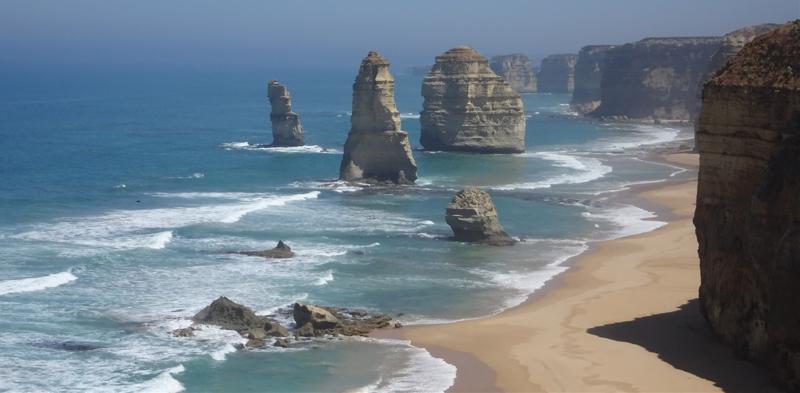
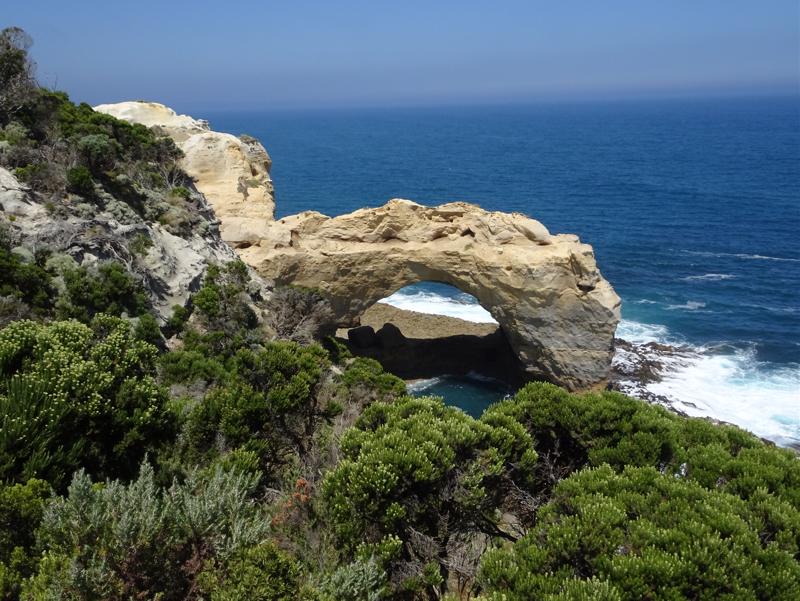
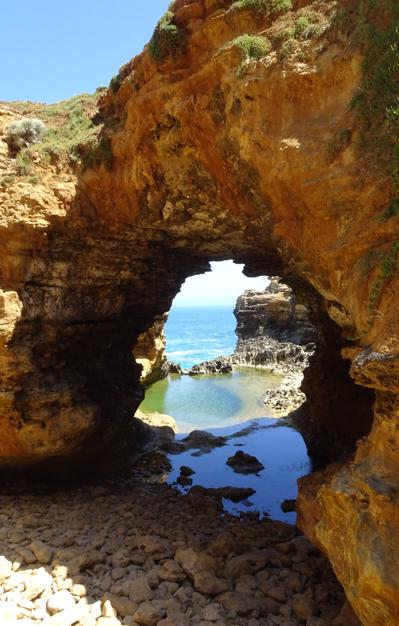
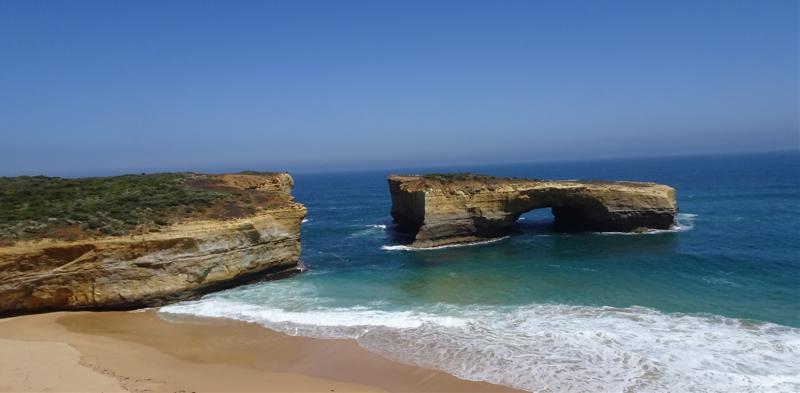
The Tower Hill wild animal refuge (koalas and emus) we drove back, choosing the direct highway back rather than the winding ocean path. We passed by numerous farms with cattle or sheep grazing; the grasses were dry, however, not the lush green of the American Midwest. The temps crept up to 42 C (108 F) during our drive, and it seemed the normal very-livable 25 C (77 F) Melbourne's average was not to be.
Our final nights in Australia are being spent in a high-rise apartment in the Docklands area of Melbourne. We made it out to St. Kilda beach and pier and saw several small penguins on the breakers and collected lots of sea glass on the beach (no waves! It's a protected harbor). We leave for New Zealand early tomorrow morning.
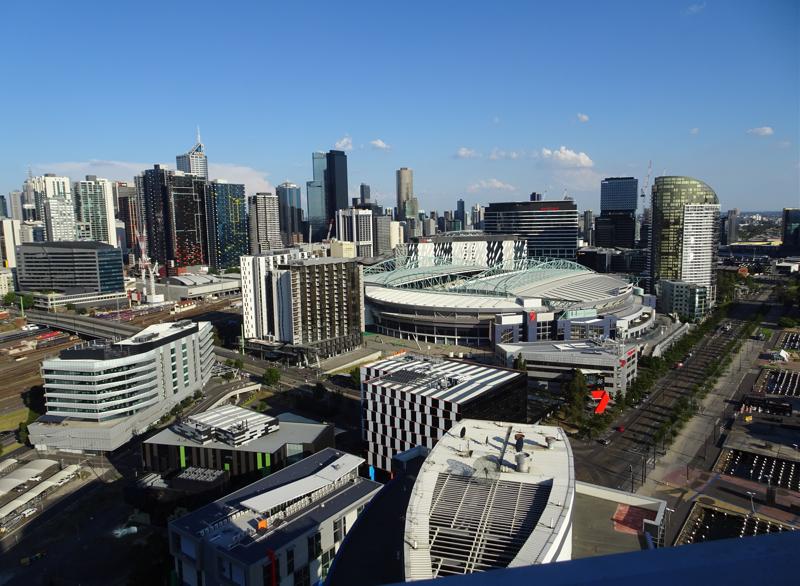
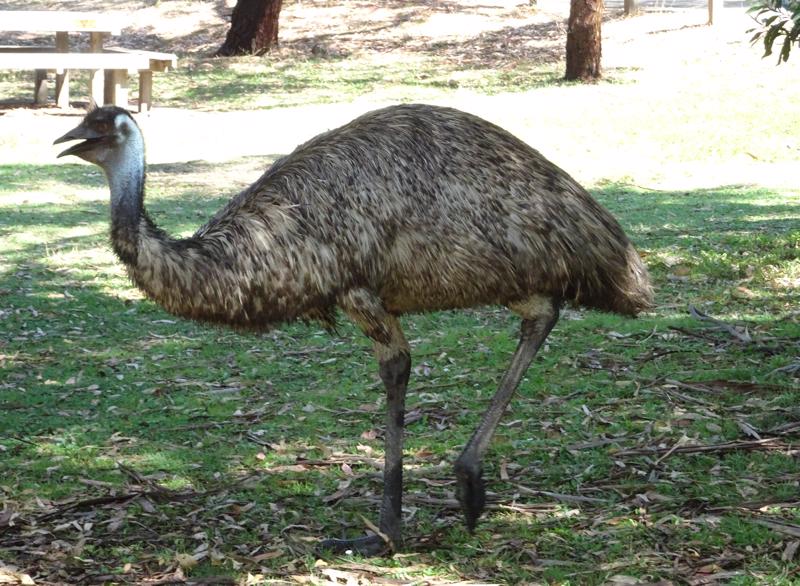
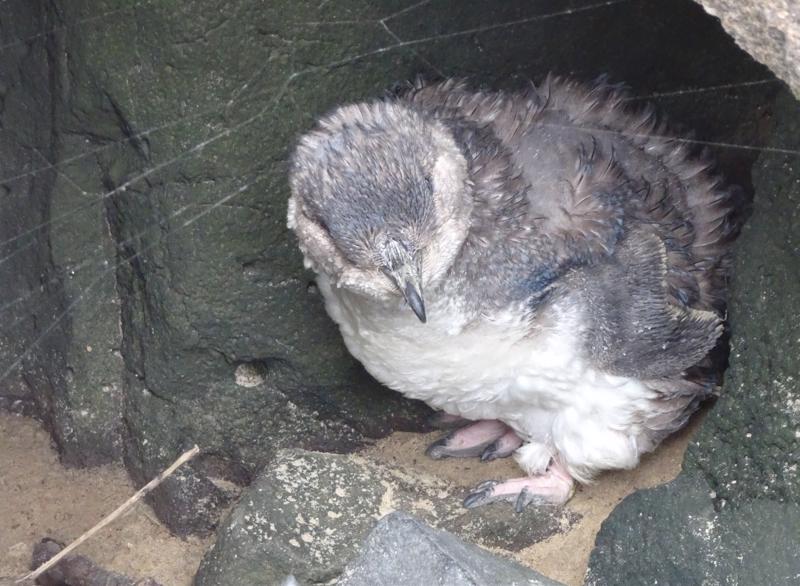
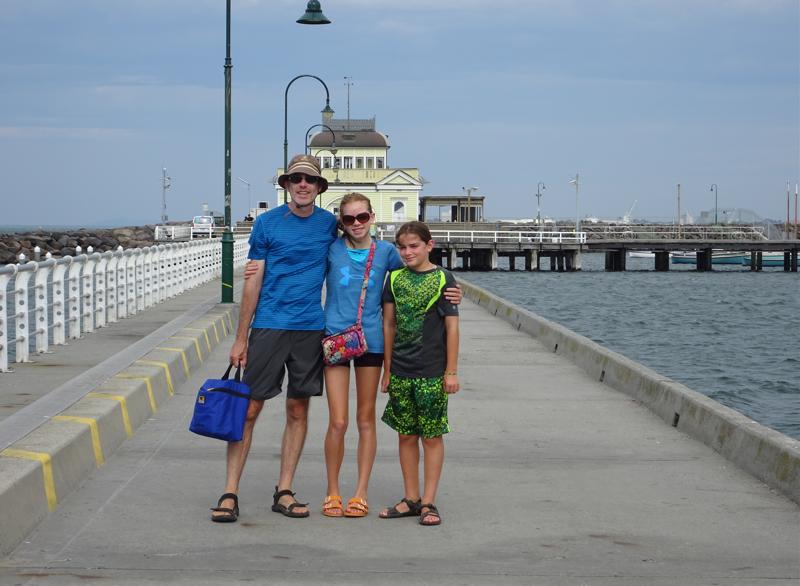
1.
Departure date
2.
Starting off in Iceland
3.
Checking in on the Queen
4.
A drive through Ireland
5.
Paris, Brussels, and Amsterdam
6.
A week in Germany
7.
Settling into Vienna, visiting Prague
8.
Week two-ish in Austria and Poland
9.
Bratislava and Halloween
10.
Budapest and Salzburg
11.
Art and history in Italy
12.
Even older history in Greece
13.
It's not a holiday, it's an adventure
14.
Thailand and Cambodia
15.
Australia
16.
In search of a Kiwi
17.
Fiji
18.
San Francisco, CA, USA
19.
Homecoming
Share your travel adventures like this!
Create your own travel blog in one step
Share with friends and family to follow your journey
Easy set up, no technical knowledge needed and unlimited storage!
© 2025 Travel Diaries. All rights reserved.